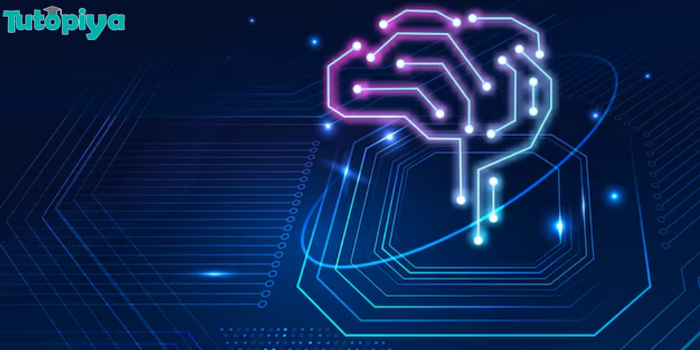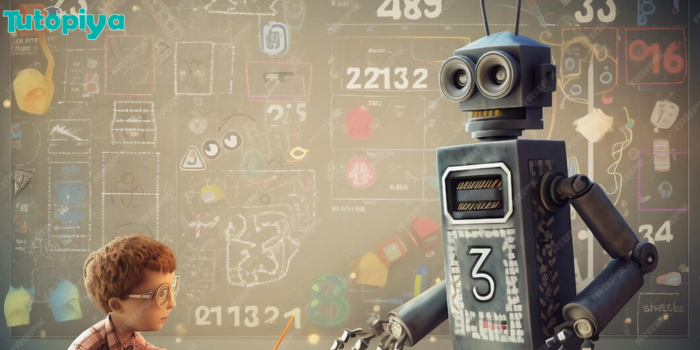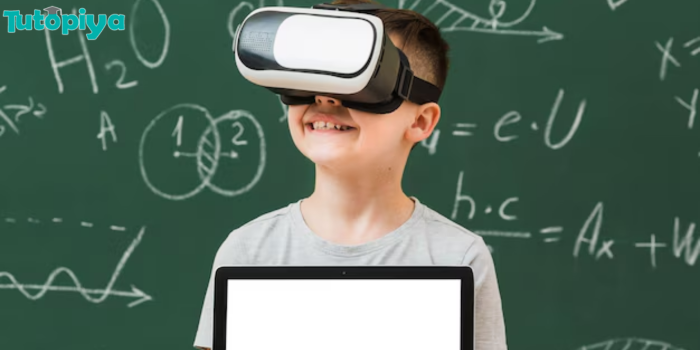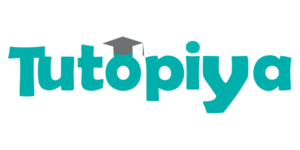- AI is revolutionizing education! Explore how AI personalizes learning, creates engaging content, & empowers educators. Discover the future of AI-powered learning
AI in Education: Transforming classrooms with technology
Artificial Intelligence: An Introduction
Humans and machines: a match made in productivity heaven. Our species owes much of its progress to our mechanized allies.
From the wheel, which transformed agriculture, to the screw, which facilitated the construction of intricate structures, to today’s robot-assisted assembly lines; machines have been instrumental in shaping our world.
And now the time has come where machines transcend their role as mere tools for physical tasks and become active partners in every aspect of our lives. With AI, we are poised to enter a world where boundaries blur, possibilities expand, and the future shines brighter than ever before.
Simply put, AI or Artificial Intelligence, is technology that enables computers and machines to simulate human intelligence and problem-solving capabilities. Contrary to our perceptions and emotions, Artificial Intelligence is no longer a mere buzzword of the sci-fi world.
It’s the reality governing every bit of life as it stands today. And we interact with it even without realizing —voice assistants like Siri and Alexa are founded on AI technology, as are some customer service chatbots that pop up to help you navigate websites.
However, when we talk about the applications of artificial intelligence in education, we primarily focus on Generative AI.
Generative AI describes algorithms (such as ChatGPT or DALLe) that can be used to create new content, including text, codes, images, videos, simulations, and games, which indicates that it has the potential to transform the landscape for a large number of content-oriented industries, especially education.
Transforming Education with AI

Education, like most other sectors, has undergone major changes in recent years, more specifically post-pandemic. Students and educators alike were compelled to adapt to new circumstances and embrace online learning. This shift has created a burgeoning demand for online education, paving the way for artificial intelligence to make a profound impact.
Be it delivering personalized learning experiences through adaptive learning, tutoring, grading and offering actionable feedback as highlighted by Matthew Lynch, one of the leading writers on the benefits of artificial intelligence in education; or creating diverse learning resources – textual (such as study notes and worksheets), visual (such as graphic novels, comic strips, flipbooks, presentations and knowledge graphs), audio-based (such as podcasts), audio-visual (such as videos, documentaries and short films) or even interactive content (such as games and simulations) – AI is best friend of the modern day educator. The list doesn’t end here.
AI would also make sure teachers don’t burn the midnight oil designing courses, planning lessons, crafting class schedules or creating assessments.
Must Read: Tutopiya’s AI-Powered Learning Revolution
The Realm of AI Tools in Education
At Tutopiya, we leverage AI to enhance the learning experience for students. Our platform analyzes each student’s learning preferences and connects them with exceptional tutors from around the world. Furthermore, AI-driven practice assignments and assessments provide students with detailed performance analysis reports.
These reports highlight their strengths and weaknesses across different concepts and difficulty levels, helping them improve their understanding. The platform also offers AI-generated step-by-step solutions to problems, allowing students to learn from their mistakes effectively.
Several other AI-powered tools are also making a significant impact in education. CoPilot, ClassPoint and ChatGPT are increasingly becoming popular when it comes to lesson planning and course creation.
Dreambox, Smart Sparrow and Knewton, are AI tools with the ability to offer differentiated learning. Gradescope is now being used to automate grading with AI, especially in higher education.
AI tools like ExactPath can be used to recognise the areas students are struggling with. Together, these tools demonstrate the transformative potential of AI in education, enhancing both teaching and learning processes.
In higher education too, AI is slowly paving its way, simplifying classroom and behavior management, improving parent-teacher communication, aiding in language learning, detecting plagiarism, and transcribing faculty lectures more effectively than ever.
Nuance – a speech recognition software; capable of transcribing up to 160 words per minute; used by students who struggle with writing or have accessibility needs, is a great example in this context.
From an administrative standpoint, AI’s capacity to design learning management systems, streamline enrollment and retention processes, analyze student success metrics, and connect campuses has been truly revolutionary.
In a video on the potential of AI in education, Bernard Marr, an author, futurist and technology advisor, emphasizes how he envisions a future where artificially intelligent-enabled systems are integrated with human teachers to enhance student learning.
He also highlights how AI tools can significantly improve inclusion and access to education. These tools can create global classrooms accessible to all, including those speaking different languages or with visual or hearing impairments, and provide access for learners unable to attend school due to illness.
Singapore's Leading Online Tuition
The Roadblocks of Using AI in Education

Needless to say, while AI offers countless benefits, its full integration into global education systems is a process that will require considerable time, primarily because of the ethical concerns it raises.
For example, public schools in New York City and Seattle have taken steps to restrict access to ChatGPT, citing concerns about its potential negative impact on student learning and the risk of encouraging plagiarism, as mentioned by a spokesperson from the New York City Department of Education, Jenna Lyle, in The Guardian.
Additionally, a 2022 study by Selin Akgun and Christine Greenhow further emphasizes that one of the key challenges of relying on AI is the potential perpetuation of biases present in the data used to train these systems. Compromising student privacy by exploitation of data via facial recognition and recommender systems is another major threat that comes with the use of AI tools.
AI-Powered Learning in Singapore
Despite the widespread debate over the pros and cons of deploying AI technology in the field of education, including the concerns and the ethical considerations cited above, there is an emerging consensus that the extraordinary range of benefits will outweigh all the drawbacks. This perspective is exemplified by Singapore, a leading knowledge economy that has embraced AI to enhance its education system and workforce.
Singapore, a nation with one of the best education systems, is continuously exploring innovative ways to leverage AI-enabled solutions to address common challenges faced by its educators and students. These efforts aim to improve training, teaching methods, learning experiences, and educational environments.
The country has made significant strides in this area, with the Smart Nation Initiative playing a pivotal role in developing and deploying scalable, impactful AI solutions in education. One noteworthy project under this initiative is the AI-enabled learning companion, designed to support holistic learning experiences.
This companion motivates students during challenging tasks, encourages reflection on learning experiences, and recommends additional learning activities, thus enhancing the overall process of learning.
Furthermore, as part of Singapore’s National Artificial Intelligence (AI) Strategy and in alignment with the EdTech Master Plan 2030, the Ministry of Education (MOE) is enhancing the Singapore Student Learning Space (SLS) with AI learning tools. This initiative aims to offer personalized learning for students and promote self-paced learning.
In June 2023, MOE introduced the Adaptive Learning System for Mathematics, focusing on three topics covered at the Primary 5 level. This system will gradually expand to encompass more topics, levels, and subjects.
Starting from December 2023, two Learning Feedback Assistants—the Language Feedback Assistant for English and the Short Answer Feedback Assistant—have also been integrated into the SLS.
The Language Feedback Assistant for English provides basic feedback on students’ writing in areas such as spelling and grammar, whereas the Short Answer Feedback Assistant provides suggested grades and auto-generated content-related feedback for close-ended, short answer questions for any subject and level. Additionally, with rapidly evolving technology, it is crucial for teachers to upskill themselves continuously.
For the same the National Institute of Education announced in May 2022 that it will intensify efforts to train teachers in integrating AI into their teaching practices. Talent development programs like “AI for Everyone” and “AI Apprenticeship” are also expected to make a significant contribution in this regard.
During an interview with Singapore’s education minister, Chan Chun Sing, he discussed the innovative use of AI in preparing students for the workforce. He mentioned that while AI-related school work for primary school pupils is primarily aimed at providing exposure and may not be graded, AI is increasingly being incorporated into graded assignments at higher levels.
Minister Chan also highlighted the success of the AI Student Outreach Programme, which saw approximately 17,000 student applications in 2023. Launched in July 2022 by AI Singapore, this initiative is designed to enhance AI literacy and proficiency among students.
He also shared some fascinating examples of how students are using AI in their learning. At Temasek Primary School, pupils are using Stable Diffusion, a generative AI image generator, to create ebooks advocating sustainability. They learn to write prompts, evaluate their effectiveness, and refine them to enhance the quality of their generated images.
Similarly, at Peirce Secondary School, design and technology teachers are guiding students in using generative AI tools like ChatGPT and Vizcom to brainstorm ideas for their projects and visually conceptualize solutions for prototypes.
These examples illustrate the exciting ways in which AI is being integrated into education, enriching students’ learning experiences and preparing them for the future workforce.
Having said that, even as Singapore explores ways to increase AI’s usage in education, experts and officials emphasize that technology can never completely replace the essential role of teachers in educating and mentoring students.
AI in Education: A Summary

To wrap up, AI has evolved from a futuristic concept to a transformative force in education, offering personalized learning experiences, creating engaging content, and streamlining administrative tasks.
Despite challenges and ethical considerations, AI’s benefits in education are undeniable. In classrooms worldwide, AI tools like adaptive learning systems, AI-generated content, and automated grading are enhancing teaching and learning processes.
These tools not only personalize learning but also free up educators’ time, allowing them to focus on mentoring and guiding students. However, we embrace AI in education, it’s important to remember that technology can never replace the essential role of teachers.
The future of education lies in a balanced integration of AI and human expertise, where technology enhances, but educators inspire and nurture young minds.
Bitasta Datta
A passionate educator with love for all things tech and a natural flair for storytelling, I am here to weave stories of science and technology, coming together to craft immersive learning experiences for learners all across the globe. But that’s not all. When I am not painting landscapes with words, I am usually splashing colors on the canvas or whipping up mouthwatering confections in the kitchen.






